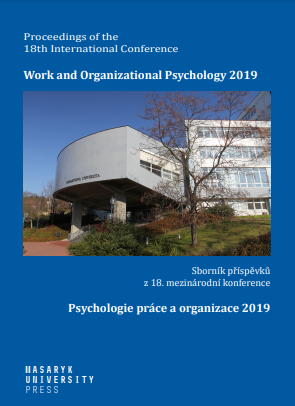Validation of the Emotion Recognition Test
Validation of the Emotion Recognition Test
Author(s): Radvan Bahbouh, Ivana Fabianová, Alžběta Knorková, Eva Chroustová
Subject(s): Psychology, Organizational Psychology, Methodology and research technology
Published by: Masarykova univerzita nakladatelství
Keywords: Emotional recognition; emotional intelligence; basic emotions; ERT; MSCEIT;
Summary/Abstract: Objectives. The Emotion Recognition Test (ERT) was introduced last year as a new tool to measure the ability to recognize emotions (Bahbouh & Fabianová, 2019). This paper adds the support for convergent validity as well as a support for validity based on the way in which the test items were answered. Method. The ERT consists of recognizing the seven emotions (anger, contempt, surprise, happiness, sadness, fear and disgust) presented on 44 photographs that appear in a random order for a period of three seconds at a time. The test is standardized based on a Czech sample of 334 respondents (Cronbach’s alpha = 0.77). For the purposes of construct validation, the MSCEIT test was used based on a sample of 65 quota-selected volunteers, and for the overall score as well as for the partial dimensions of the MSCEIT, the correlation significances were tested as part of the convergence validity. For the support of validity based on the way in which the items were answered, two workshops focused on recognizing emotions for students were used, wherein one group (N = 19) was tested at the beginning of the workshop and the second (N = 18) was tested at the end. Results. The Pearson correlation of the ERT and the overall score of emotional intelligence measured by the MSCEIT was significant (r = 0.294, p = 0.009). In terms of the individual dimensions of emotional intelligence, the correlations with Using emotion (r = 0.383, p = 0.001) and Understanding emotion (r = 0.232, p = 0.032) were significant. In the study focused on the validity given by the way in which test items were answered, the students in both groups used their understanding of the manifestation of emotions when responding to the questions. The previously instructed group achieved statistically significantly better results in the ERT (t = 3.396, d = 1.117). Conclusions. Results of both studies support the validity of the ERT, whose main advantage is a low time intensity. Additionally, the utilization of the test as part of training in the given competence was investigated. Limitations. A limitation of both studies is the relatively small sample in the Czech Republic.
Book: Work and Organizational Psychology 2019
- Page Range: 65-72
- Page Count: 8
- Publication Year: 2019
- Language: English
- Content File-PDF

